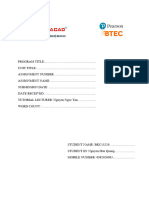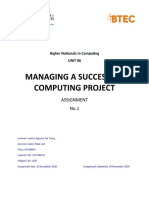0% found this document useful (0 votes)
15 views1 pageFunction Flow
The document outlines a comprehensive process for setting up and managing smart devices within an IoT network, including steps for initial setup, data collection, processing, and decision-making. It emphasizes the importance of user interaction, security measures, and predictive maintenance, while also highlighting the technologies involved at each stage. Additionally, it covers testing, documentation, installation, and ongoing observation and maintenance of the system.
Uploaded by
piriwe4724Copyright
© © All Rights Reserved
We take content rights seriously. If you suspect this is your content, claim it here.
Available Formats
Download as TXT, PDF, TXT or read online on Scribd
0% found this document useful (0 votes)
15 views1 pageFunction Flow
The document outlines a comprehensive process for setting up and managing smart devices within an IoT network, including steps for initial setup, data collection, processing, and decision-making. It emphasizes the importance of user interaction, security measures, and predictive maintenance, while also highlighting the technologies involved at each stage. Additionally, it covers testing, documentation, installation, and ongoing observation and maintenance of the system.
Uploaded by
piriwe4724Copyright
© © All Rights Reserved
We take content rights seriously. If you suspect this is your content, claim it here.
Available Formats
Download as TXT, PDF, TXT or read online on Scribd
/ 1
























































